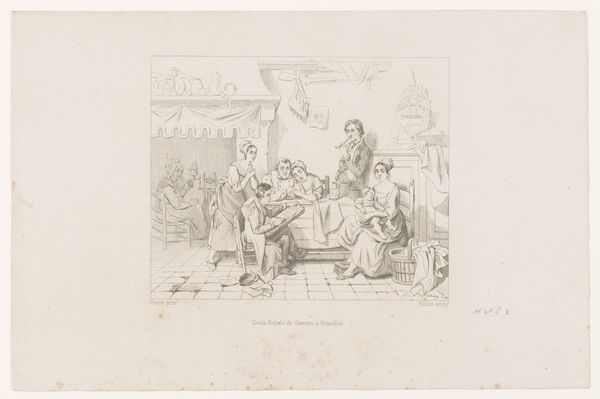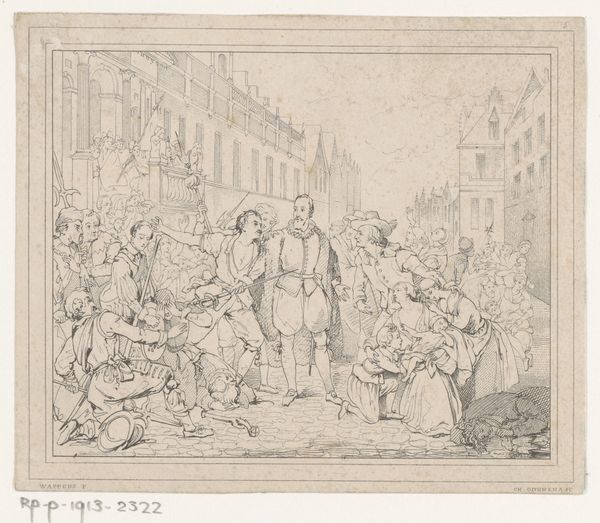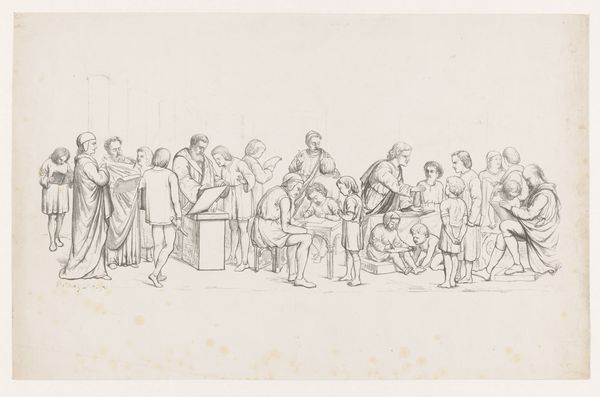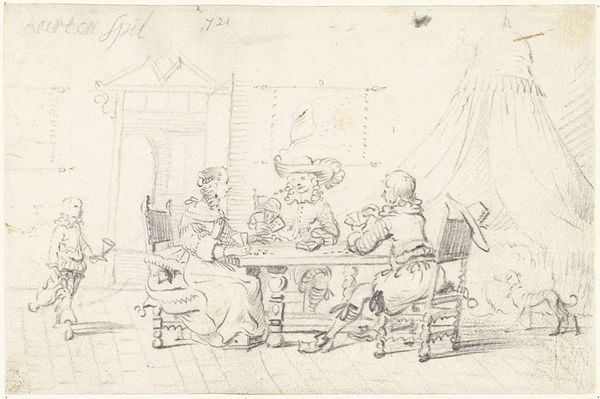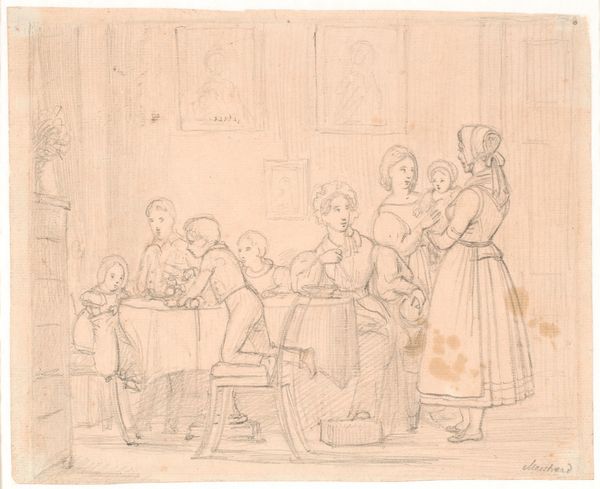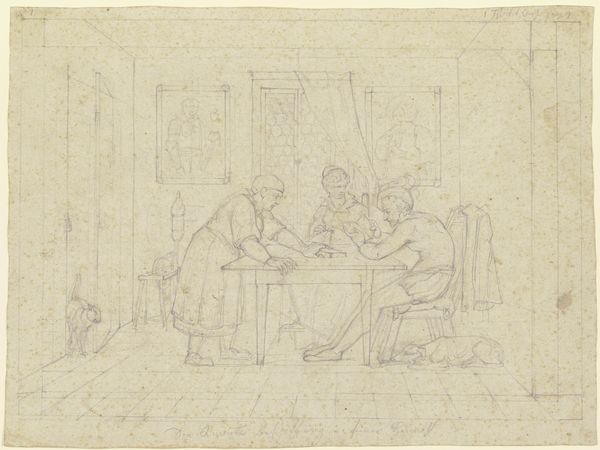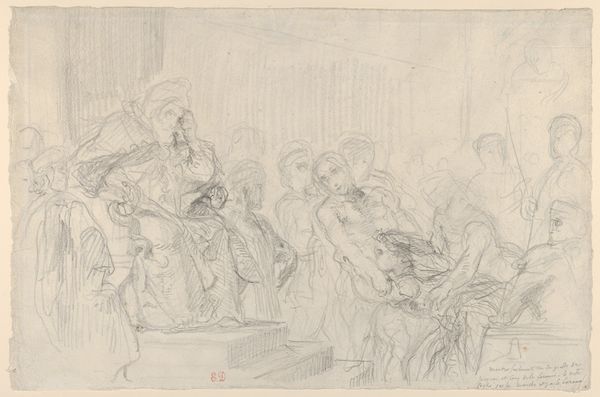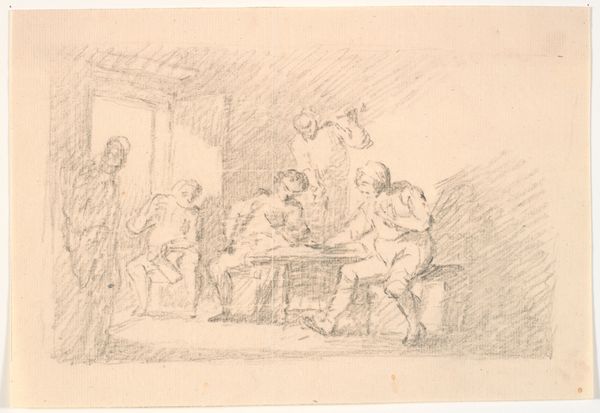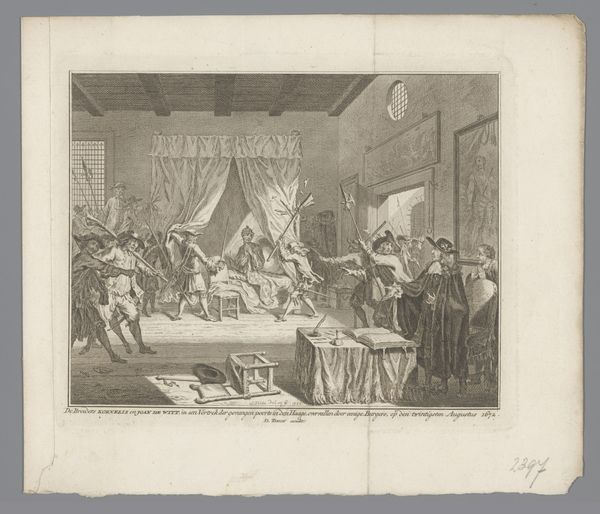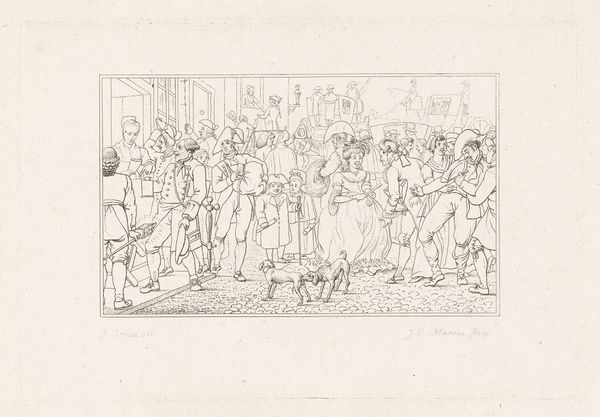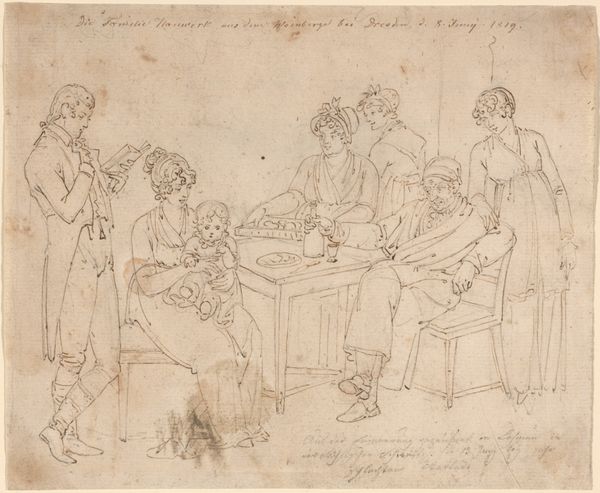
Dimensions: height 117 mm, width 153 mm
Copyright: Rijks Museum: Open Domain
Charles Onghena made this etching of a peasant tavern scene sometime in the 19th century. It gives us a glimpse into the social life of rural communities and how they were represented in art. The scene is bustling with activity, with figures clustered in intimate groups. What power dynamics are at play? Who is included and excluded? It's clear that the artist makes some attempt at realism, but also clearly idealizes the scene, softening the edges of what could have been harsh rural realities. This was a time of significant social change, with the rise of industrialization and urbanization challenging traditional ways of life. Visual culture became a battleground of ideologies. Images like this played a role in shaping perceptions of social class and rural life in Belgium. To truly understand the artwork, one must delve into the social history of 19th-century Belgium. Consult historical documents, social commentaries, and art criticism of the time. Consider the role institutions, like art academies and salons, played in promoting certain kinds of imagery. Only then can we begin to grasp the complex interplay between art and society.
Comments
No comments
Be the first to comment and join the conversation on the ultimate creative platform.
